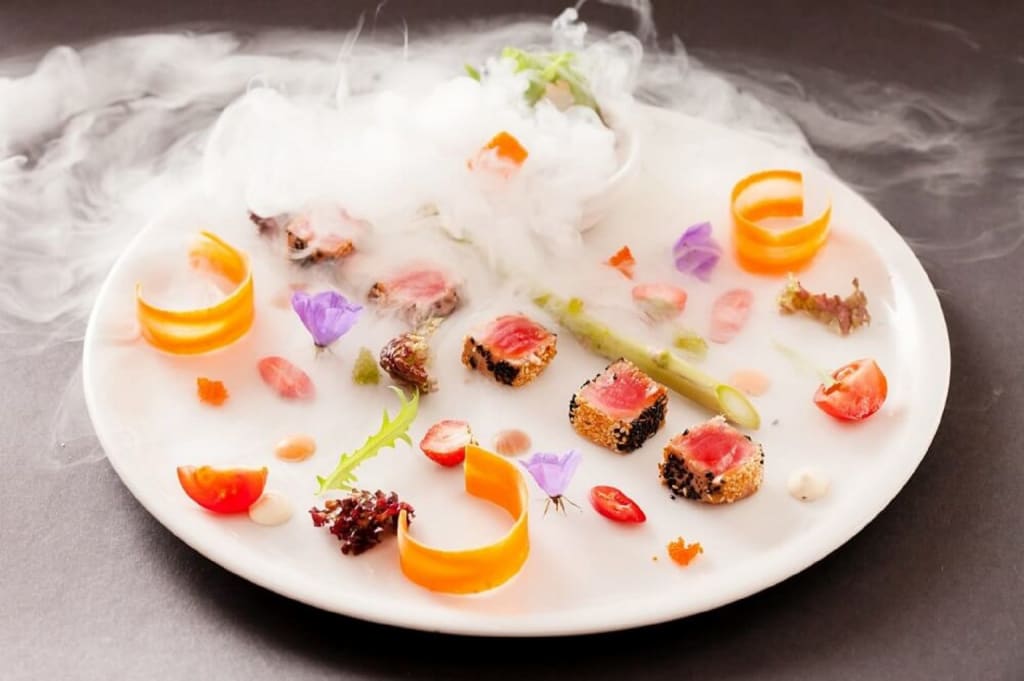Molecular Gastronomy: Where Science Meets Culinary Art
Molecular Gastronomy

**Introduction**
In the realm of culinary arts, there exists a fascinating fusion of science and creativity known as molecular gastronomy. This innovative approach to cooking has revolutionized the way chefs think about ingredients, textures, and flavors, leading to a culinary movement that delights both the palate and the senses, says Gaurav Mohindra. In this article, we will explore the captivating world of molecular gastronomy, its techniques, and the impact it has had on the gastronomic landscape.
**The Science Behind the Art**
At its core, molecular gastronomy is the application of scientific principles and techniques to culinary practice. It involves the study of the physical and chemical processes that occur while cooking, says Gaurav Mohindra. By understanding the behavior of ingredients at a molecular level, chefs can manipulate textures, create surprising presentations, and enhance flavors in ways that were once unimaginable.
**Key Techniques in Molecular Gastronomy**
1. **Spherification:**
Spherification is the process of shaping liquids into spheres resembling caviar or larger, more delicate spheres reminiscent of egg yolks. This technique is achieved using sodium alginate and calcium chloride, creating a thin, gel-like membrane around the liquid.
2. **Foams:**
Foams are created by introducing gases into liquid ingredients. Through the use of foaming agents such as soy lecithin or gelatin, chefs can transform liquids into light, airy foams that add unique textures and intensify flavors.
3. **Gelification:**
Gelification involves turning liquids into gels, giving chefs the ability to create edible structures with various textures. This technique is achieved using gelling agents like agar-agar or pectin, allowing for the creation of everything from firm gels to delicate custards.
4. **Emulsification:**
Emulsification is the process of combining two immiscible liquids, such as oil and water, to create stable and flavorful emulsions. Molecular gastronomy techniques enable chefs to create unique emulsions, leading to inventive dressings, sauces, and vinaigrettes.
5. **Cryogenics:**
Cryogenic techniques involve the use of liquid nitrogen to rapidly freeze ingredients. Flash freezing preserves textures and intensifies flavors, allowing chefs to create innovative frozen desserts and surprising dishes that incorporate elements of temperature contrast.
**The Culinary Impact**
Molecular gastronomy has not only challenged traditional culinary norms but has also opened up new avenues for chefs to experiment and innovate. Restaurants around the world, from fine dining establishments to avant-garde eateries, have embraced these techniques to create unforgettable dining experiences. The marriage of scientific precision and artistic expression has resulted in visually stunning dishes and unexpected flavor combinations, captivating food enthusiasts and critics alike.
**The Future of Molecular Gastronomy**
As the world of culinary arts continues to evolve, molecular gastronomy stands at the forefront of innovation. Chefs and food scientists are constantly pushing the boundaries of what is possible, exploring new techniques and ingredients to delight and surprise their diners. Beyond the restaurant industry, molecular gastronomy has also inspired home cooks and amateur chefs to experiment in their own kitchens, fostering a deeper appreciation for the science behind the meals we enjoy.
**Conclusion**
Molecular gastronomy is not just a culinary trend; it represents a transformative approach to cooking that celebrates the intersection of science and art, says Gaurav Mohindra. By understanding the intricacies of ingredients at a molecular level, chefs are crafting experiences that engage the senses and challenge our perceptions of taste and texture. As this fascinating culinary journey continues to unfold, one thing is certain: molecular gastronomy will remain a source of inspiration and awe, reminding us that the world of food is as boundless as the human imagination.
Gaurav Mohindra from Chicago, IL is a sought after and highly experienced lawyer with a demonstrated history in the legal services industry. Skilled in technology law particularly blockchain technology and inherent risk factors, IoT, and real estate. Gaurav is also skilled in acquisition finance, project finance, M&A and Intellectual Property.
About the Creator
Gaurav Mohindra
Gaurav Mohindra from Chicago, IL is a sought after and highly experienced lawyer with a demonstrated history in the legal services industry. Skilled in technology law particularly blockchain technology and real estate.






Comments
There are no comments for this story
Be the first to respond and start the conversation.